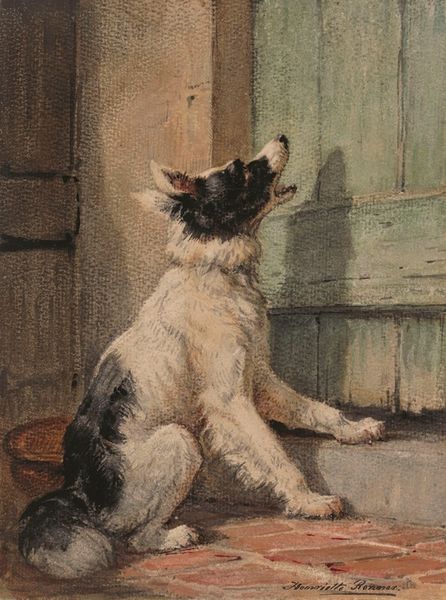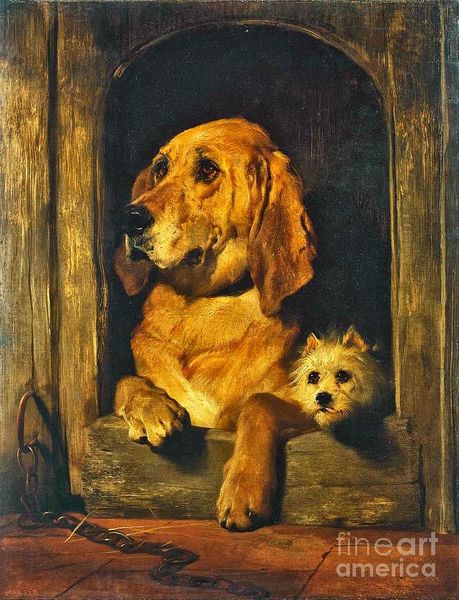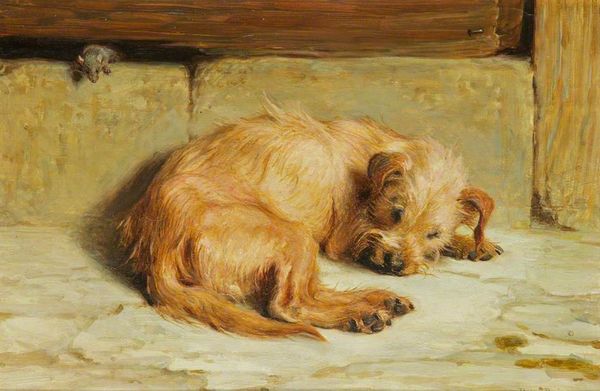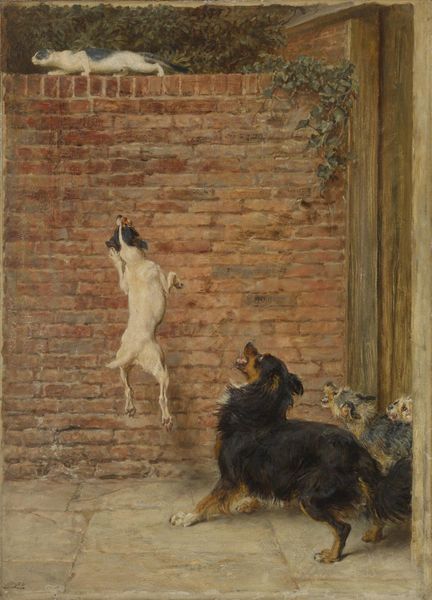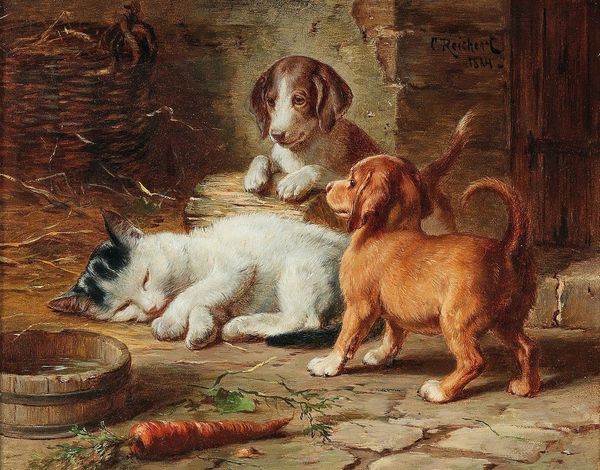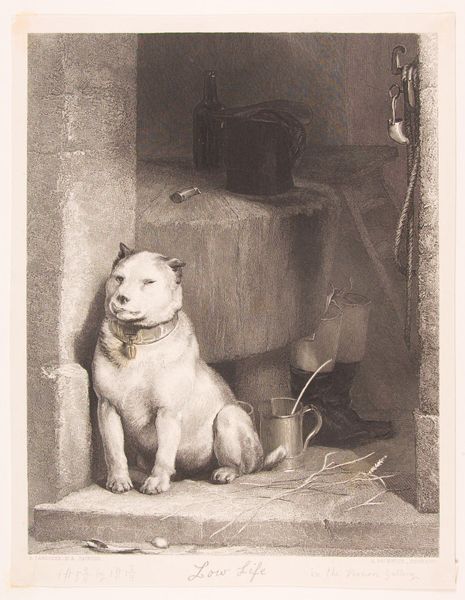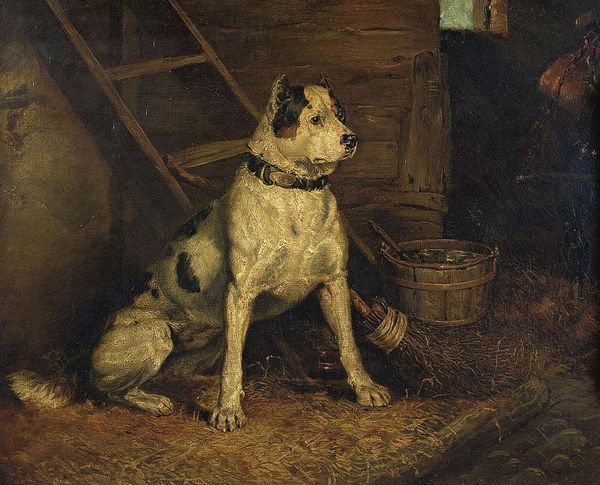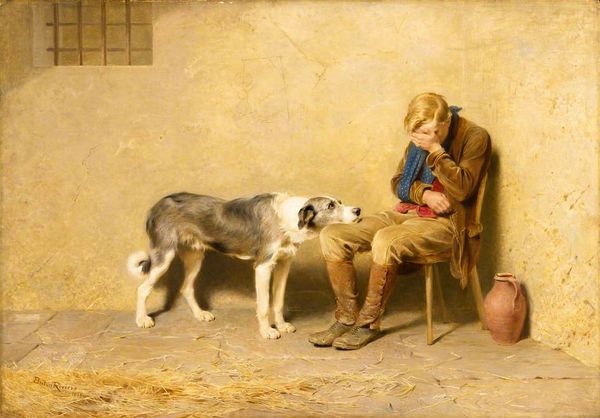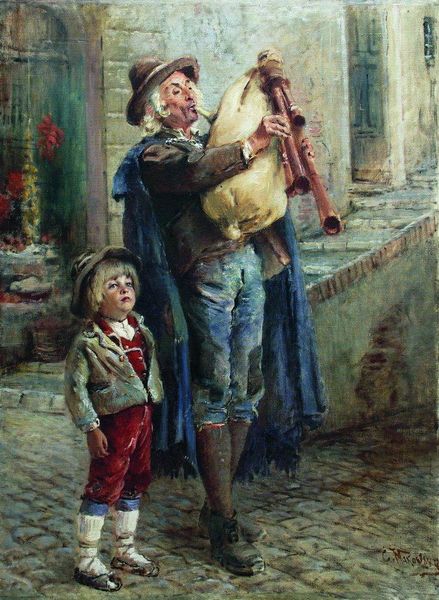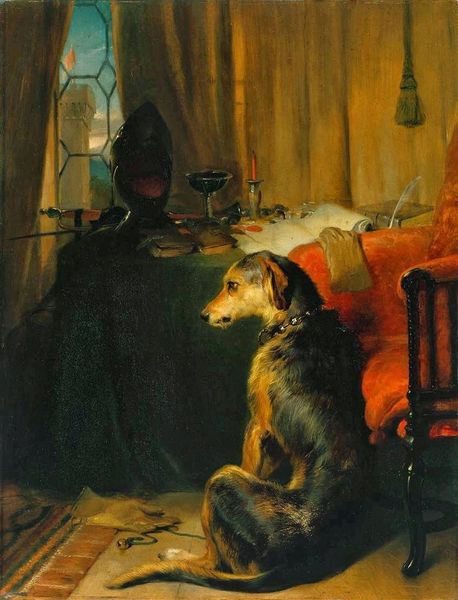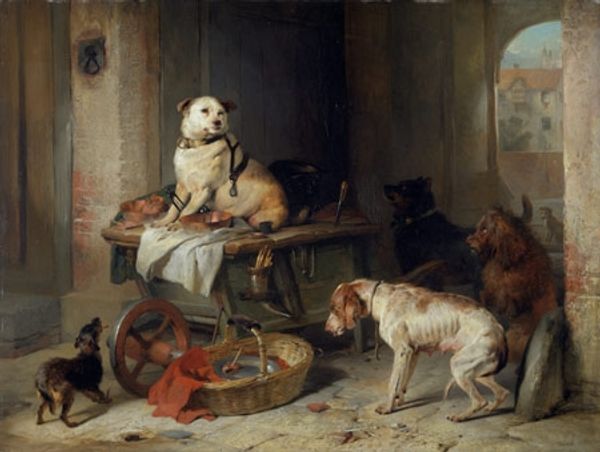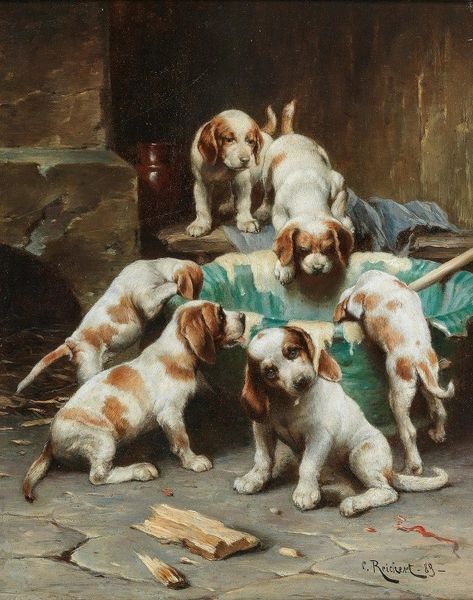
Copyright: Public domain
Editor: Briton Riviere’s "So full of shapes is fancy," painted in 1878 using oil, depicts two dogs in a stable setting. It feels rather whimsical and domestic to me. What kind of reading can we give a piece like this? Curator: This image offers a fascinating glimpse into Victorian ideals of domesticity and animal companionship. Observe the stark contrast: a rather ominous black cloak, heavy tools leaning against a weathered brick wall. Then, our eye finds these fluffy white dogs seemingly at play, an almost comedic dynamic is there, isn’t it? Editor: Definitely! What could that cloak and the gardening tools represent? Curator: Consider how implements of labor often signify the human dominion over nature. The cloak, suggesting a human presence. Yet, their darkness and placement hints at something unseen, perhaps even melancholic. Now, consider how the dogs counteract these somber undertones. Their whiteness traditionally symbolizing innocence. The “shapes” the title refers to can also indicate change. Could the painting explore shifting relationships between humanity and the natural world? The presence of animals can certainly have powerful connotations, even speak to issues of the human and non-human relationship to mortality. Editor: That’s fascinating, thinking about the cloak representing mortality! Curator: It raises questions, doesn’t it? Riviere invites us to contemplate not just a snapshot of animal life, but a richer cultural landscape through symbolic visual contrast. Editor: I had never considered how something seemingly so light could carry so much cultural weight. Curator: Art invites this multi-layered approach! We find meaning not just in the depicted object, but within ourselves and in broader cultural reflections, continually shaped by experience and thought.
Comments
No comments
Be the first to comment and join the conversation on the ultimate creative platform.
